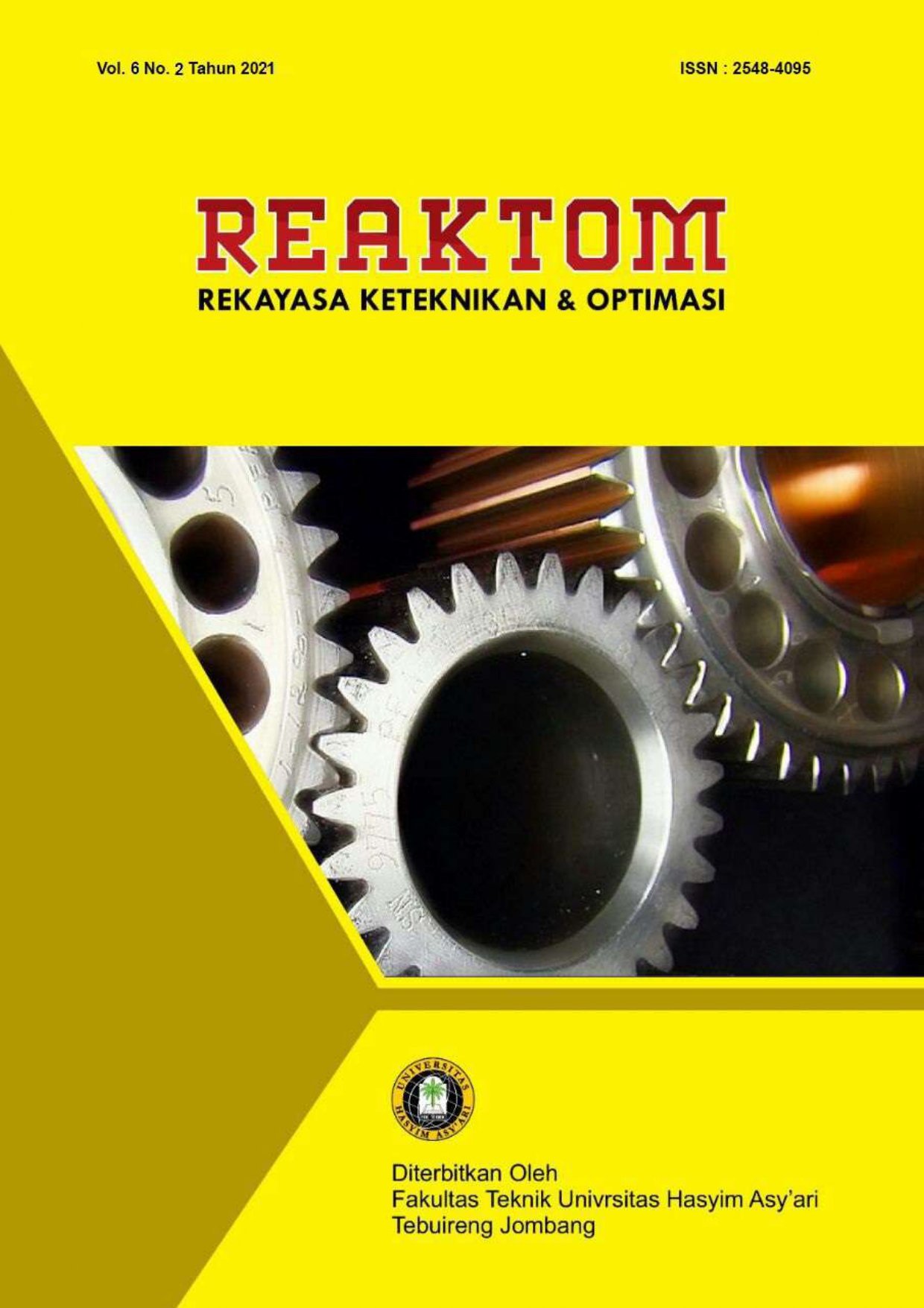Daya Output Panel Surya Tipe Polycristalline Dengan Kemiringan Sudut 10o Pada Instalasi Penerangan Rumah
DOI:
https://doi.org/10.33752/reaktom.v6i2.2175Keywords:
Angle Of Inclination, The Effectiveness Of The Performance, The Solar Panel.Abstract
Solar Panel technology is technology that serves to transform the energy of sunlight into electrical energy. Solar Panel is a layer of semiconductor that has a surface area of and consists of a series diode. The sun is the main source of energy that is produced solar panels. In the use of solar panels, which have a major influence is the intensity of the light of the sun (radiation), due on panel solar radiation greatly affects the size of the power obtained from the system photovoltaic. The angle of inclination of solar panels the right is very influential in order to obtain maximum power intensity of the light of the sun. Therefore this study was conducted to determine the influence of the tilt angle of the solar panel to the power output of solar panels. This study describes a result of the angle of inclination which has a result in the form of voltage, current, power and efficiency. With the aim to determine the voltage, current and power produced by the tilt angle of 10 °with respect to the output power of the solar panel. The angle of inclination used in this study is the slope angle of 10º. In this study, using the method of the analysis of comparative data from the test results using the tilt angle of 10º. The results obtained in the form of data using the calculation formula and the instruments of data collection. This research is to get the test results in the form of Voltage that the most optimal is produced at a slope angle of 10° on day 1 of 12.5 Volts, while on day 2 of the resulting tilt angle of 10° at 13.6 Volts, and on day 3 the resulting tilt angle of 10° by a 13.7 Volts. The current most optimal generated at a tilt angle of 10° on day 1 of 5 Amperes, while on day 2 of the resulting tilt angle of 10° at a rate of 5.2 Amperes, and on day 3 the resulting Current tilt angle of 10° by 5,65 Ampere. Power is the most optimal generated at a tilt angle of 10° on day 1 were 62.5 Watts, while on day 2 of the power generated tilt angle of 10° of 70.7 Watts, and on days 3 power produced by the tilt angle of 10° amounted to 77.4 Watt.
Downloads
References
Ali, Syurkarni, T.M. Azis Pandria. 2018 “Penentuan Sudut Kemiringan Optimal Panel Surya Untuk Wilayah Meulabohâ€. Jurnal Mekanova Vol 4. No. 1, April 2018
Janaloka. 2017. Memilih Controller Untuk Sistem Panel Surya. (Online), https://janaloka.com/memilih-controller-untuk-sistem-panel-surya/ , diakses 11 Februari 2021).
Rahman, Aulia, Sulo, Bambang Dwi, dan B, Bambang Minto . 2019. “Prototype pembangkit listrik energi matahari sebagai penggerak pompa air sistem smart off gridmenggunakan atmega 2560â€. 7 Halaman: Teknik Elektro Fakultas Teknik Universitas Islam Malang.
Pradona, Yoga. 2019. Skripsi: Variasi Kemiringan Sudut Terhadap Efektivitas Kinerja Panel Surya. 75 Halaman: Jurusan Teknik Mesin Fakultas Teknik Universitas Muhammadiyah Sumatera Utara Medan.
Siahaan, Rinaldo, IGB Wijaya Kusuma dan IW Bandem Adnyana. 2020 “Pengaruh Sudut β dan ω pada PLTS di PT Indonesia Powerâ€. Jurnal METTEK Volume 6 No 1 (2020) pp 62 – 69.
Downloads
Published
How to Cite
Issue
Section
License
Authors who publish with this journal agree to the following terms:
- Authors retain copyright and grant the journal right of first publication with the work simultaneously licensed under a Creative Commons Attribution License that allows others to share the work with an acknowledgment of the work's authorship and initial publication in this journal.
- Authors are able to enter into separate, additional contractual arrangements for the non-exclusive distribution of the journal's published version of the work (e.g., post it to an institutional repository or publish it in a book), with an acknowledgment of its initial publication in this journal.
- Authors are permitted and encouraged to post their work online (e.g., in institutional repositories or on their website) prior to and during the submission process, as it can lead to productive exchanges, as well as earlier and greater citation of published work (See The Effect of Open Access).


